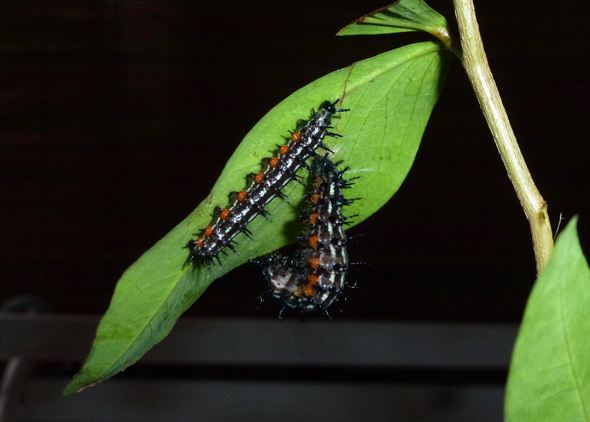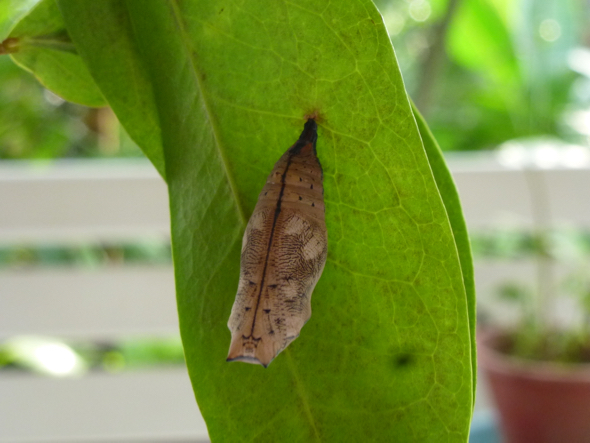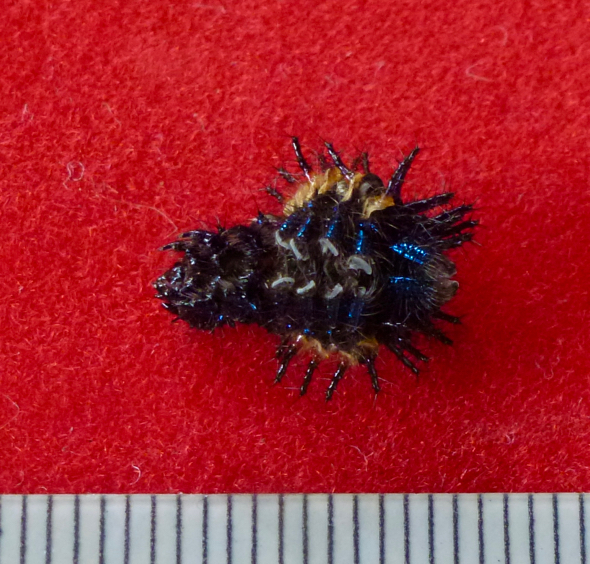A few of the mid-December 2015 Autumn Leaf (Doleschallia bisaltide) caterpillars, courtesy of Maryann Vitudio, showed signs of pupating within days. They were moving up and down the stems of Common Asystasia (Asystasia gangetica) grown in potted soil placed in a basin of water. They even wandered around the rim of the pot – see HERE
I find the change from an active caterpillar to a passive pupa fascinating.
Once the caterpillar is satisfied with a particular spot, either on the underside of a twig or of a leaf, it weaves a tiny silk pad on the surface. And using its pair of anal claspers, it attaches itself firmly onto it, hanging head down with the anterior end pointing upwards in a “J” shape (above)
The pupating caterpillar shows slight movements as the body begins to transform into a pupa (below). The pupa is formed under the skin of the caterpillar and when the transformation is complete, the skin splits near the head end to expose part of the newly formed, whitish pupa (video above).
There is violent wriggling as the old skin is gradually pushed up the body of the newly formed pupa until it gathers as a crumpled mass at the point of its attachment and then discarded (below). This takes up to 3-4 minutes.
Around this time numerous microscopic hooks develop to firmly anchor the pupa to the silk pad. This is to ensure that the pupa does not get detached with its violent movements to discard the old skin. Once the skin is detached, there is a further 4-5 minutes of movements as the pupa wriggles, twists and turns before it settles down (video below).
The pupa then hangs passively for the next 8 days. It will only wriggle about when disturbed.
YC Wee & Maryann Vitudio
Singapore
December 2015











